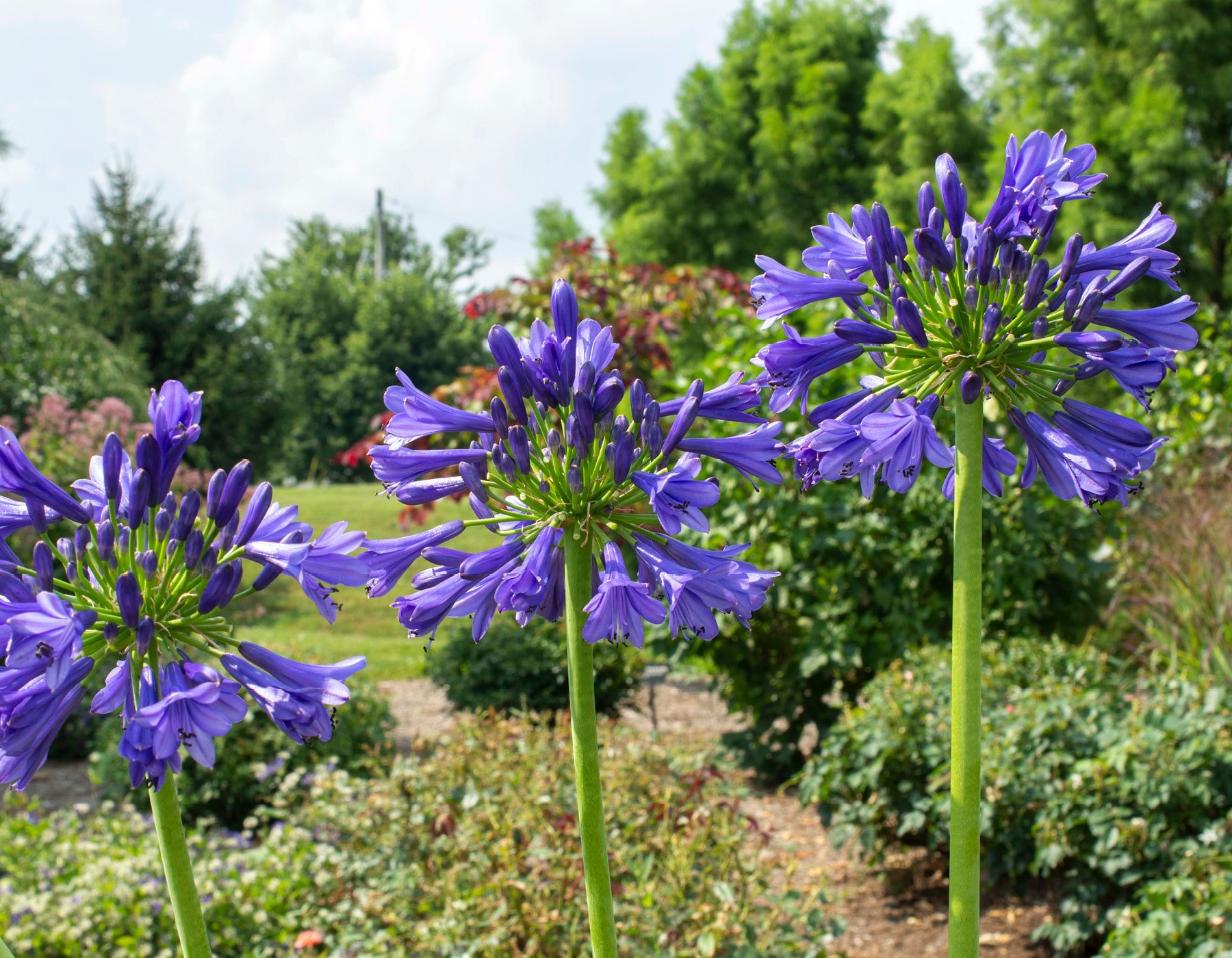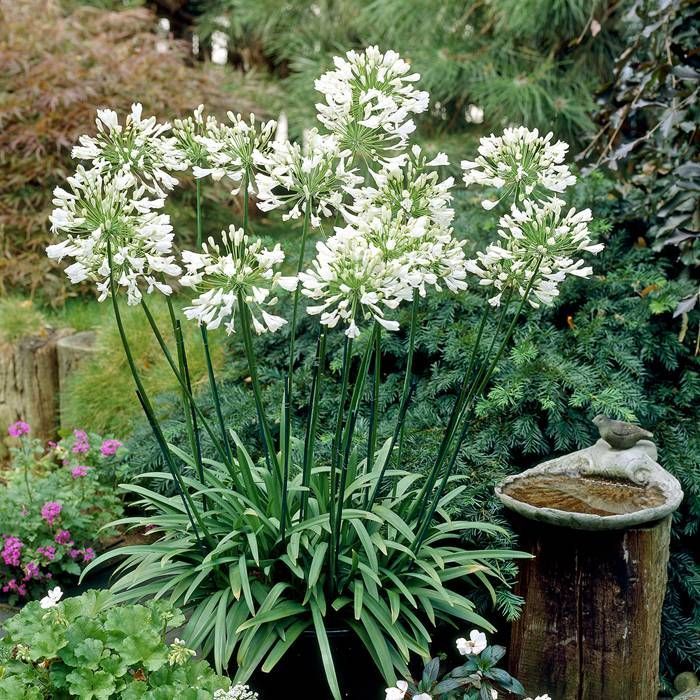Agapanthus Friend Plant Kingdoms: Perfect Pairings for Your Garden
Agapanthus Friend Plant Kingdoms: Perfect Pairings for Your Garden
Blog Article
Releasing the Secret to Effective Agapanthus Growing: Tips and Tricks for a Flourishing Yard
In the realm of gardening, cultivating agapanthus successfully requires a tactical method that encompasses different aspects of plant treatment. By understanding the subtleties of agapanthus farming, one can create a setting where these plants flourish and bloom generously.
Growing Agapanthus: Finest Practices
When planting Agapanthus, proper soil prep work is vital for ensuring effective development and development of these lovely blossoms. Agapanthus, typically recognized as Lily of the Nile or African lily, flourishes in well-draining dirt with a slightly acidic to neutral pH degree - Agapanthus. Before planting, it is critical to change hefty clay dirts with organic matter such as compost or peat moss to enhance drain and offer necessary nutrients for the plants
To grow Agapanthus, pick a place that gets full sunlight to partial shade, as this will certainly promote healthy growth and abundant blooming. Dig an opening two times the size of the plant's root ball and place the Agapanthus at the very same deepness it was formerly expanding. Carefully backfill the hole with dirt, pushing down securely to get rid of any air pockets around the roots.
Water the newly planted Agapanthus extensively and remain to maintain the dirt equally damp, particularly during the plant's active expanding period. Agapanthus. Using a well balanced plant food once a month can even more support the plant's growth and blooming. By complying with these finest methods for planting Agapanthus, you can produce a sensational screen of these captivating blossoms in your yard
Perfect Dirt Issues for Agapanthus
For ideal development and blooming success of Agapanthus plants, making certain the dirt problems are ideal is critical. Agapanthus likes soil that is abundant in nutrients, so integrating a well balanced fertilizer throughout the growing period can promote healthy development and lively blooms.

Watering and Feeding Tips
To guarantee healthy and balanced development and vibrant blossoms, correct watering and feeding strategies are necessary for successful Agapanthus cultivation. Agapanthus plants profit from routine watering, especially during the expanding period.
When it involves fertilizing Agapanthus, a well balanced fertilizer with equivalent parts nitrogen, phosphorus, and potassium can be used in the springtime to promote healthy growth and blooming. Slow-release fertilizers are suitable for supplying nutrients slowly over an extended period. Avoid over-fertilizing, as this can result in excessive vegetation development at the expense of blossoms.
Furthermore, incorporating natural matter like compost right into the dirt can boost nutrient levels and boost dirt structure, assisting in the overall health of the Agapanthus plants. By complying with these watering and fertilizing ideas, gardeners can guarantee their Agapanthus plants thrive and create stunning display screens of flowers.
Trimming and Deadheading Strategies
Appropriate trimming and deadheading methods play an essential duty in maintaining the wellness and visual appeals of Agapanthus plants, enhancing the vital techniques of watering and fertilizing for successful farming. Pruning Agapanthus entails eliminating invested blossom heads, yellowing or dead fallen leaves, and overall shaping of the plant to advertise far better growth. Deadheading, the process of removing discolored blossoms, not just enhances the plant's look yet also motivates more blooming.
When have a peek here deadheading Agapanthus, it is recommended to snip off the blossom stem at the base utilizing sharp, tidy shears. This procedure reroutes the plant's power from seed production back into root and vegetation development, advertising a much healthier and extra durable plant. Regular deadheading can extend the blooming duration of Agapanthus and prevent self-seeding, which can result in overcrowding.
In terms of pruning, Agapanthus typically take advantage of a light trim after blooming to clean the plant and urge fresh development. Reducing the invested flower stems and eliminating any type of dead or damaged vegetation assists preserve the plant's vigor and overall look. Nevertheless, it is necessary to prevent cutting into the crown of the plant, as this can deteriorate its health.

Protecting Agapanthus From Vermins and Diseases
Executing effective bug and condition administration approaches is important to guarding the wellness and vitality of Agapanthus plants in farming. One typical pest that impacts Agapanthus is the Agapanthus borer, a caterpillar that passages into the plant, triggering damages to the leaves and flowers.
Along with pests, Agapanthus are at risk to diseases such as origin rot and fungal leaf places. These concerns can often be protected against by ensuring proper drain and avoiding overwatering. If signs of illness show up, influenced components of the plant need to be quickly eliminated to protect against additional spread. Fungicides might additionally be made use of as a treatment step, following the manufacturer's instructions very carefully. By remaining watchful and attending to parasite and disease problems without delay, garden enthusiasts can assist their Agapanthus prosper and flourish.

Final Thought
In verdict, successful farming of agapanthus calls for proper growing strategies, excellent soil problems, ample watering and fertilizing, routine trimming and deadheading, and protection from bugs and conditions. By following these tricks and ideas, garden enthusiasts can guarantee a prospering look these up garden full of lovely agapanthus blossoms. Agapanthus. Remember to preserve constant treatment and focus to information to advertise the health and longevity of these spectacular plants
When growing Agapanthus, proper dirt preparation is vital for ensuring successful growth and advancement of these attractive blossoms.Water the newly planted Agapanthus completely and continue to keep the dirt equally wet, especially during the plant's active expanding period.For optimal growth and growing success of Agapanthus plants, ensuring the soil problems are perfect is important. When planting or hair transplanting Agapanthus, make sure the soil is well-prepared to supply the necessary foundation for the plants to develop themselves efficiently. One usual parasite that influences Agapanthus this contact form is the Agapanthus borer, a caterpillar that passages right into the plant, causing damage to the flowers and leaves.
Report this page